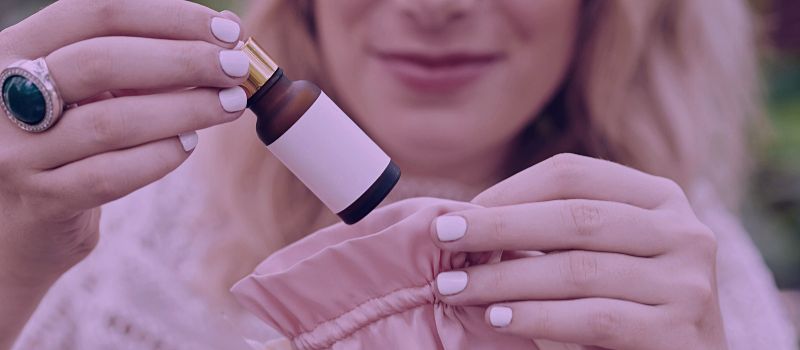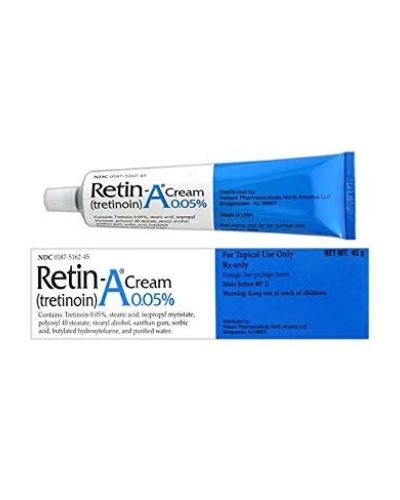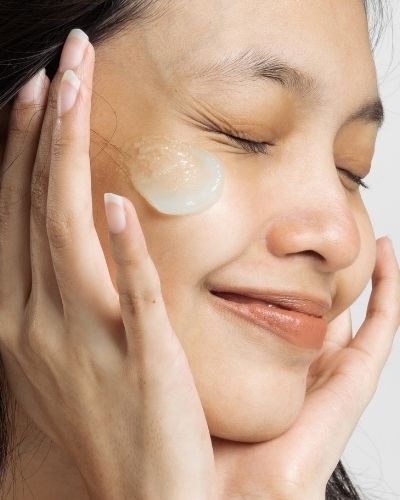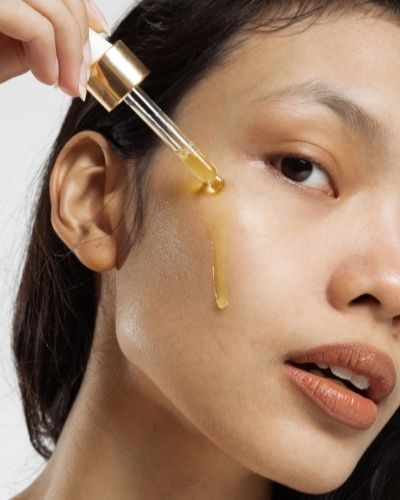If you’re looking for the best anti-aging product out there, you may have heard that starting with stronger Retin-A will give you better results.
However, this isn’t exactly true because it’s the duration of using Retin-A that will give you the best results and not necessarily the strength.
So how does this work?
In this article, I will talk about how Retin-A works, how to use it properly, and why stronger Retin-A isn’t more effective than a weaker option.

What is Retin-A and What are its Benefits for the Skin?
Retin-A is the brand name for tretinoin, also known as all-trans retinoic acid, which is an active form of vitamin A.
It’s one of the most studied and research-backed ingredients in skincare products and works incredibly well to fix various skin concerns.
Some of the main benefits of using Retin-A are:
- Decreased lines and wrinkles.
- Improved hyperpigmentation and discoloration.
- Refined texture.
- Decreased sun damage.
- Reduced acne.
- Improved acne scarring, including post-inflammatory redness and pitted scarring.
RELATED: How do You Know Tretinoin is Working
How Does Retin-A Work to Improve the Appearance of the Skin?

Retin-A speeds up cell turnover (the rate that your skin produces new cells and sheds them from its surface.)
Skin cell turnover slows down as you age and causes dead skin cells to accumulate on the surface of your skin. This prevents your skin from reflecting light and can leave you with a dull and tired complexion.
Slow skin cell turnover is also one of the main causes of acne and leads to clogged pores that form whiteheads and blackheads and can become inflamed to form more severe acne when bacteria start feeding on the cellular debris inside the pore and proliferating.
Therefore, after starting Retin-A, your skin cells will travel faster to the surface, purging clogs in the process and revealing a brighter, smoother, healthier, and more unified complexion.
RELATED: Beginners Guide to Tretinoin.
What Strengths Does Retin-A Come In?
As a topical cream, Retin-A is available in a variety of different strengths, starting from the lowest 0.025%, mid-strength 0.05%, going all the way up to the strongest 0.1% Retin-A.
Retin-A topical gel, which is usually prescribed for oilier and coarse skins, is only available in 0.025% and 0.1%.
Another version of Retin-A, called Retin-A Micro®, uses a microsphere formula and is available in 0.04%, 0.08%, and 0.1% strengths. This version is usually prescribed to people with extremely sensitive or rosacea-prone skin.
Is Stronger Retin-A More Effective Than Weaker Retin-A?

No.
Starting Retin-A with the strongest formula available won’t give you better results quicker, but it will put your skin through more annoying side effects such as irritation and peeling.
Slowly building up tolerance is the key to healthy and glowing skin with retinoids, and especially tretinoin, as this is the strongest topical option available before Accutane.
For example, weaker Retin-A will still give you great results and will also prep and strengthen your skin for a stronger upgrade.
Stronger retinoids will only continue to give great results because it’s the duration of use that gives continuous results and not necessarily the strength.
So, if you know someone who’s been using the strongest Retin-A for a long time and says it’s a game-changer compared to the weakest Retin-A, it’s likely the duration of use that gave them great results.
The longer you use retinoids – the better your skin will look.
What Are Some Side effects of Retin-A Use?
Although very efficient in improving acne, wrinkles, hyperpigmentation, and other signs of aging, Retin-A definitely comes with its own set of troubles, which is why it’s advisable to take it easy and give your skin extra care when starting out.
Here are the most common side effects of using Retin-A:
Dryness & irritation
Retin-A works by speeding up the skin cell turnover cycle, ridding of the old layer of skin faster than usual.
This causes your skin to become dry and flakey as your skin purges and peels to become accustomed to the retinoid.
RELATED: How to Fix Dry Skin From Tretinoin?
Peeling
Peeling is another common side effect caused by the increased skin cell turnover cycle.
The skin usually peels the most around the mouth, but this unwanted occurrence can develop in any areas where Retin-A is used.
It’s also very important to thoroughly wash Retin-A off your fingers and hands after applying it, as it will also cause these areas to peel, too.
Increased sun sensitivity
As your skin adapts to Retin-A, it will likely become more sensitive to the sun.
This happens because the rapid cell shedding will incapacitate the skin from protecting itself from the sun, which is why you will start experiencing sunburns much quicker than it took you to experience them before starting Retin-A.
This is why wearing sunscreen is absolutely crucial while using Retin-A because the sun damage on the skin has the potential to be even more severe while the skin is vulnerable due to the active ingredient in the product.
Purging
As Retin-A works by speeding up cellular turnover, this action will push all those dead skin cells that didn’t shed properly and remained inside the pore to the surface of the skin.
So what will happen when you start using Retin-A is your skin will basically purge all those clogs to the surface and turn them into pimples so that they can heal and disappear.
And because all of them will come out on the surface at the same time, instead of popping up as one or two pimples every few days or weeks, it will definitely look scary, but it is actually a good thing.
Lastly, while a purge usually lasts anywhere from 8-12 weeks, it’s not uncommon for it to stick around even up to six months or a year, especially if you are using skincare or makeup products that are continuing to clog your pores, because this way Retin-A will just continue to purge the clogs.
This is unlikely to happen to someone whose skin isn’t prone to acne, and if it does, it would usually be something mild.
However, since Retin-A is often prescribed to people whose skin is prone to acne, the purging stage is likely to be more intense in these cases.
RELATED: How Long Does A Differin Purge Last?
How Can you Maximize the Benefits of Using Retin-A?

There are many ways to go wrong about using Retin-A, which will likely cause even more issues than benefits on your skin.
This is why it’s important to use Retin-A in the right way and support your skin while it’s getting used to this powerful active ingredient.
Here’s how to maximize the benefits of using Retin-A:
Use Gentle Skincare Products
Having a simple skincare routine that consists of gentle, non-irritating products is key when starting Retin-A, as your skin will likely get irritated in the first few weeks and will need special care and support.
The best skincare routine while on Retin-A consists of:
- Gentle cleanser.
- Ultra-nourishing moisturizer.
- Sunscreen in the morning.
Avoid Exfoliation
Exfoliation is something you need to stay away from, especially during the time your skin is getting used to Retin-A.
Retin-A already does a great job in speeding up cellular turnover and making the skin cells shed at increased rates than usual.
But don’t forget that the skin cells on the skin’s surface have a very important function in retaining moisture and keeping the skin barrier strong and healthy.
Therefore, continuing to remove them through exfoliation will only lead to more irritation and a weakened skin barrier.
Avoid Other Anti-Acne Actives
Another thing to avoid while your skin is getting used to Retin-A is other anti-acne actives such as benzoyl peroxide.
I’ve heard from many people that have tried to use benzoyl peroxide to help clear the Retin-A-induced purge in the beginning, but this is definitely a destructive strategy that will lead to dry and irritated skin.
The best thing to do during a Retin-A purge is to support your skin barrier with an ultra-nourishing moisturizer and other gentle skincare products, instead of destroying it with more drying actives.
Use Sunscreen
As your skin will become more sensitive to the sun when starting Retin-A, it is absolutely crucial to use a gentle, mineral sunscreen and protect your fragile skin from burning.
Apply Retin-A Properly
The most efficient way to apply Retin-A for best results is by using the “simple method.”
Here’s how the simple method of applying Retin-A works:
- Cleanse with a gentle cleanser.
- Wait until the skin is fully dry (don’t pat or towel dry, let it dry naturally.)
- Apply a pea-sized amount of Retin-A on dry (not damp) skin.
- Wait 20-30 minutes.
- Apply a moisturizer.
Waiting 20-30 minutes is necessary because you don’t want to move the product around while applying moisturizer, as this will give you uneven coverage.
Additionally, there are three most commonly applied methods of tretinoin use, which I talk about in my article How to Layer Tretinoin with Other Products?

My name is Simone and I am a certified skin specialist. I created this website to teach my readers how to take great care of their skin and I also like to occasionally share my honest opinions on skincare products I’ve tried. You can learn more about me here.
